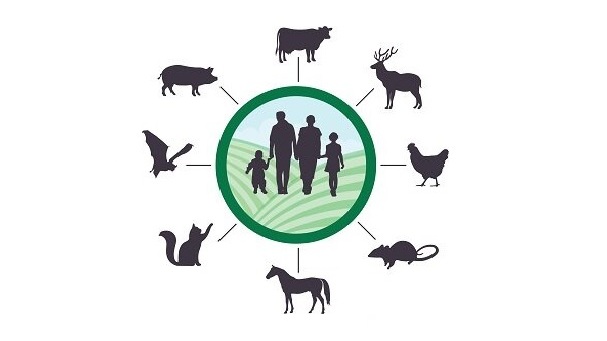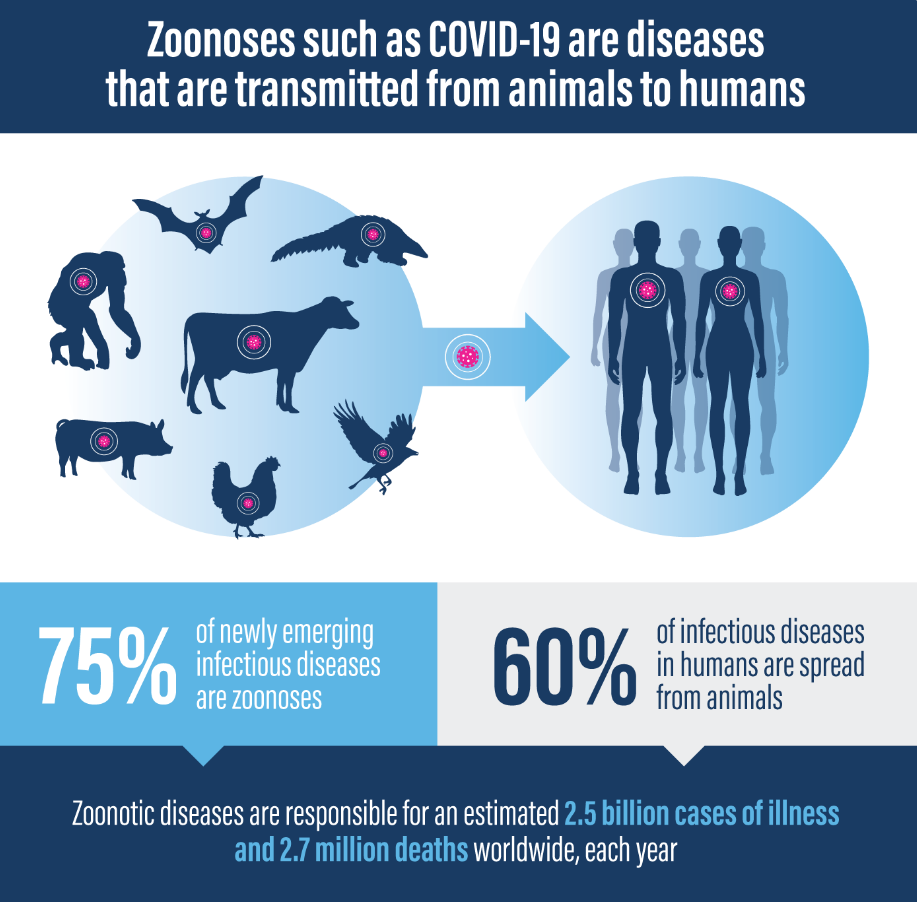There are many benefits from animals to people. Many people even interact with animals in their daily lives. Zoonotic diseases are caused by harmful germs like viruses, bacterial parasites, and fungi.
We all know that animals provide food, travel, livelihoods, companionship, and whatnot for people all over the world.

In many households, there are one or more pets that people come in contact with while visiting these animals.
However, animals carry harmful germs that can spread to people, and illnesses are known as zoonotic diseases.
Zoonotic diseases are caused by harmful germs like viruses, bacterial parasites, and fungi.
The germs can cause many different types of serious illnesses in people and animals.
The animals can sometimes appear healthy too even when they are carrying germs that can even make people sick, depending on the zoonotic disease.
Zoonotic diseases are very common now around the world.
Scientists have noticed that more than 6 out of 10 known infectious diseases in people can be spread from animals, and 3 out of 4 new infectious diseases in people come from animals.
How do germs spread between animals and people?
Because of the close contact between people and animals, it is important to be well aware of certain common ways in which infections are caused in humans which can lead to Zoonotic disease.

That includes direct contact with the saliva, blood, feces, or other body fluids of an infected animal.
Another is indirect contact coming in contact with areas where animals live and roam or have been affected by germs.
Next is vector-borne which is being bitten by a tick. Lastly foodborne and waterborne.
Impact of Zoonotic disease:
An observation has been found that these zoonotic diseases are the new pathogens from animals particularly viruses that remain unpredictable and also continue to grow and spread across the countries.

The disease is also a concern to global health owing to its epidemic potential, high case-fatality ratio, and also lack of specific treatment and vaccines that are available to control the spread of this disease.
As the world is interconnected with each other, emerging zoonoses in any country can potentially cause a threat to global health security.
Zoonoses cause mortality and morbidity and also cause a high burden on health systems.
It also causes significant economic losses to the countries as well by way of losing animal trade, and travel as well as loss of economic opportunities for the people through loss of livestock.
Zoonotic diseases can have a drastic impact with severe economic consequences for the countries through loss of trade, and consumer confidence, trade.
Where one such incident was reported how zoonosis had adversely impacted the economy of a country-the emergence of SARS back in 2003 led to the cost of the world economy over USD 50 billion on account of medical treatment and also there was the loss of revenues that were associated with the abrupt halt of the tourism industry.
Also an outbreak in Kenya of RVF in Kenya, each household lost on average US$500 as a result of low productivity and cost related to RVF disease control.
Control of Zoonotic disease:
Zoonotic diseases are difficult to control, particularly in their animal reservoirs.

Unlike other diseases like smallpox and polio, most zoonotic diseases cannot be removed through intensive human vaccination campaigns.
The control relies on certain strategies that are aimed at reducing the burden of disease among wild animals.
To give an example in the case of rabies, the distribution of baits containing oral rabies vaccine has led to the near removal of this disease of the variant rabies.
Zoonotic disease risk is increased when people come in contact with domestic animals such as poultry and livestock.
Read Also: New diseases that could be the next pandemic
Although there are practices that allow efficient use of limited land resources and also constant care and protection of the animals, it also allows the risk of infection.
Limiting contact between humans and wild animals is extremely critical to reducing the risk of zoonotic disease transmission.
Other prevention may include proper personal hygiene, environmental maintenance, and flock maintenance.













